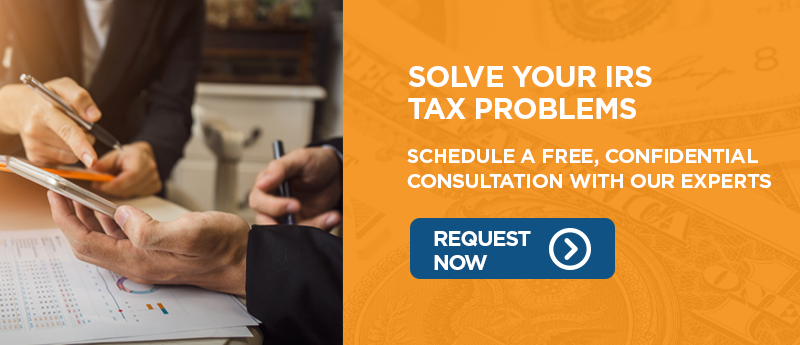
With the recent quarantine shutdowns and job losses, everyone is feeling the pinch. Some more than others. Now it’s time to file and pay income taxes.
If you are one of the individuals whose financial house is in disarray, you may wonder, “Do I qualify for financial hardship with the IRS?”
Defining Financial Hardship
The IRS defines financial hardship by considering if an individual would face unfair financial hardship after the collection of outstanding taxes.
That’s rather vague, isn’t it? How low do you have to go to make the IRS feel sorry for you? Also, is there a way to qualify for Currently Not Collectible status (CNC)? CNC allows the IRS to put your files away for a time until you have enough money to pay back taxes.
The IRS Hardship Program
In the Internal Revenue Manual (part 5, chapter 15, section 1, if you want the details), a provision describes Currently Not Collectible status and lists the stipulations for consideration of hardship:
“Collection of liability would create a hardship for the taxpayers by leaving them unable to meet necessary living expenses.”
Okay, so what are “necessary living expenses,” Uncle Sam?
Living expenses that fall within IRS guidelines are categorized into four groups called Collection Financial Standards:
- Clothing, food, housekeeping supplies, personal care products, and miscellaneous items.
- Out of pocket healthcare expenses
- Housing and utilities
- Transportation
Those categories seem pretty broad, but you must also have an annual income of less than $84,000 and have little to no funds left after paying for all these living expenses. Obviously, in some areas of the country, it is pretty easy to spend every bit of that.
The CNC status can apply to an account for up to 10 years, which is the statute of limitations for collection. There is a caveat: CNC does not stop penalties and interest from accruing. However, while your status is CNC, the IRS may not impose any collection procedures to settle your tax debts.
How to Prove Hardship
As always, you have to gather a stack of paperwork and submit your financial information to the IRS. This includes:
- Collection Information Statement Form 433A/433F for individuals or the self-employed
- Collection Information Statement Form 433B for qualifying corporations or partnerships
- Forms and supporting documents reporting a list of everything you own and the market value for each asset
- Income and spending statements for the past three months
- Copies of your most recent tax returns
- The three-month average of income and expenses based on category
- Proof of disability, if appropriate
If you don’t want to tell the feds quite so much about your affairs, you may wish to opt for an online payment agreement instead. It’s easier to qualify and requires less extensive disclosure.
Once the IRS confirms CNC status, you get Letter 4223 Case Closed - Currently Not Collectible, or a similar letter.
Who Qualifies for Hardship?
Let's dig a little deeper into how the IRS considers hardship eligibility. If you have just enough money to get by after supporting your family and cannot pay your tax bill, the IRS begins to think you might qualify.
The agency analyzes your financial situation by adding your total allowable living expenses and deducting them from your total monthly income.
The answer is called your net disposable income, with which the IRS expects to pay your taxes. If you can prove you have little to no net disposable income, you can qualify for IRS hardship.
Currently, Not Collectible status can be used for:
- Individual or joint IMF assessments
- Sole proprietorships
- Partnerships where the general partner is personally liable
LLCs where the individual owner is identified as the liable taxpayer
CNC is not meant for large corporations. It is intended for individual taxpayers and small business owners.
Once you have CNC status, your taxpayer information is reviewed every two years to ensure you still qualify as a hardship. An increase in income and a belief you have the ability to repay the IRS removes you from CNC status and revokes IRS hardship.Each tax year is treated separately. The CNC does not roll over automatically to include the next tax year. You can try to qualify for CNC each year, but it becomes increasingly difficult to be considered eligible.
To avoid additional penalties, you must still file your taxes on time, even if you don’t pay. The penalty for failure to file is significantly higher than failure to pay. Also, you're better off if you pay any new taxes immediately because it won't affect your hardship designation. It prevents you from accumulating more debt.
Payment Plans
If you are not declared Currently Not Collectible, yet you can’t pay your taxes in full on tax day, you can qualify for a payment plan.
The IRS offers installment plans, in which you agree to pay your taxes within an extended time frame. If you go for one of these, you should expect to pay in full within that period.
Installment plans have the following requirements:
- Individuals with balances over $25,000 must pay by Direct Debit
- Businesses with balances over $10,000 must pay by Direct Debit
- Processing fees may apply for payment by debit or credit card
- Interest and penalties continue to accrue until your taxes are paid in full
- The IRS adds a user fee when creating a payment plan
If you qualify for a short-term payment plan, you won’t be liable for the user fee. For all payment plans, you can apply online. You must confirm your identity using a list of the required information.
Offer in Compromise
What if you just can’t pay the entire amount in the immediate future? You may be eligible for an Offer in Compromise.
Also called an IRS settlement, an Offer in Compromise is a better option than trying to qualify for hardship status. You might want to get professional help with filing for one.
What you are doing is making your best offer to the IRS and hoping it’s acceptable. If the government accepts, you compromise and settle your tax debt for less than the original amount.
Collection Methods
If you don’t qualify for CNC status and you can’t manage a payment plan or offer in compromise, the IRS has a few ways to collect on your tax debt.
- Tax lien - the federal government's legal claim against your property, including real estate, personal property, and financial assets. The lien stays until you pay your debt.
- Tax levy - the federal government takes your property and applies it to your tax debt. A levy is a progression of a lien.
- Garnished wages - also called wage levies, the government collects a portion of your wages and applies it to your back taxes. This continues until your tax debt is paid in full.
Final Note
Everyone knows they must pay taxes every year. Make sure to hold aside enough income to pay your taxes and avoid all the mess. However, if life in 2020 won’t keep you afloat, you have options to keep you from drowning.




